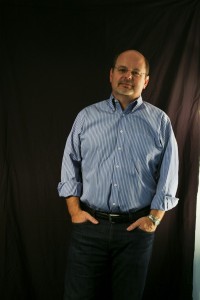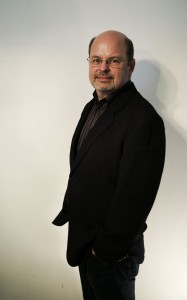By John Gilstrap
NEWS FLASH: We interrupt this blog post to bring you a special bulletin. My novel Hostage Zero has been nominated by the Private Eye Writers of America for the Shamus Award for Best Paperback Original. Winners will be announced at a private banquet in St. Louis during Bouchercon in September. Fingers crossed.
Now, on with the blog post . . .
There’s an old joke about a scientist who amputates the legs from a specially trained jumping frog. After the wounds have healed, the scientist spends days saying, “Jump Froggie, jump!” yet the frog just sits there. Based on the empirical evidence, the scientist concludes that frogs go deaf after you cut off their legs.
I thought of this joke several times yesterday, following Jordan’s great post about S&S’s decision to distribute John Locke’sbooks. Some of the responses troubled me, both in tone and in content. People seemed to be taking away from that story lessons that I don’t think apply. Moreover, they seemed to be taking away lessons that could prove harmful to them in the end.
Wrong Lesson #1: Locke’s deal is replicable by others. Think Amanda Hocking, right? This is the new wave of publishing. Joe Konrath, too. Finally, the authors have the publishing world on the ropes. A new day has dawned.
Okay, I’ll concede the new day thing, but only to a point. First, let’s consider how the system worked fifteen years ago, when I was a rookie in the publishing league. I wrote the book and my agent sold the book. I cashed the check and started writing the next book, earning back at the rate of $3.25 per copy sold. The publisher took all of the risk, paid all of the designers, established all of the distribution, handled most of the publicity, and in return might or might not make any money out of the transaction.
In Locke’s case, the publisher waited on the sidelines until a writer took all of the risk, paid out all of the marketing money, and dedicated countless hours to promotion, selling a million-plus copies at $0.99 apiece. Seeing a sure thing, S&S stepped in to make money with near-zero risk. This was not a David v. Goliath moment. It was a sound business transaction that was preceded by the literary equivalent of a lightning strike. Ditto the Amanda Hocking deal.
To me, Locke’s deal is the equivalent of General Motors telling an untried engineer, “Tell you what, kid. If you design the car, build the factory, manufacture a few thousand copies, road test them, market them, get them written up in Car and Driver and build a loyal customer base, I’ll let you use a corner of some our show rooms to sell them.” It’s a sound business decision, but it’s hardly a model for every young engineer.
Wrong Lesson #2: The smart new author needs to retain his digital rights, granting a publisher only print rights. Two words come to mind for this one: career suicide.
Let’s take this one from the point of view of a publisher who’s dealing with a brand new author:
I don’t need your book. I’m awash with books. No one knows who you are, but I’m willing to try and change that. The odds are woefully stacked against us, but I’m willing to commit thousands of dollars in designer time, editor time and marketing time to help your book rise above the noise. Our editors will help you be a better writer than you could ever be on your own. Plus, I’m going to pay you—not as much as we pay Grisham or King, but that kind of money is there for you when you get those kinds of results. You get to keep the advance money, too, even if I lose my bet on you.
But if you want to profit from my expertise, you have to give me the tools with which to earn it. The print business is shrinking, baby. The future lies in eBooks, whatever form they’ll take in the coming years. I’ll put you in catalogues that those eBook originals will never see. I’ll show you off in Frankfurt at the Book Fair, and I’ll give away ARCs at the ABA convention. We’ll put you on our website, which is visited not just by readers, but by bulk buyers and libraries. Think of all of this as thousands of dollars in free services, all because we believe in you.
What’s that? Still not convinced? You just want to leave me with what you perceive as the dregs so that you can have only upside? Run along, young author.
Next?
This publishing game is a business, and the author is only a small part of the machine. I think there’s way too much hype out there vilifying the publishing industry as some kind of parasite, and it’s just not true. Publishers are the gateway to success.
Fifteen years ago, authors who weren’t very good turned to vanity presses that stoked the fires of artistic egalitarianism. Every now and then, a Christmas Box phenom broke out and fired unwarranted dreams that ended up in garages full of unsold printed books. Now, those same authors, or authors like them, are turning to eBooks with irrational hopes. A few will make it, but many will not. Of those who do make it, most would have done better if they had pursued the traditional publishing route.
The hook to indie e-publishing is the lure of 70% (or whatever the number is) of the cover price of every book sold, versus the 25% that is quickly becoming the standard in the traditional publishing world. Ultimately, authors must ask themselves which is better: 70% of 1,000 books sold (or 10,000 or 25,000) at $0.99 apiece, or 25% of 150,000 books sold at $4.50 or $9.00 apiece. They need to ask themselves if their true expertise is in writing or if it is in publishing.
One thing seems clear to me in all of the self-pub success stories: In every case, the author established a reliable fan base before the Big Deal was closed. There’s no easy way to do that, but some ways are way easier than others.




